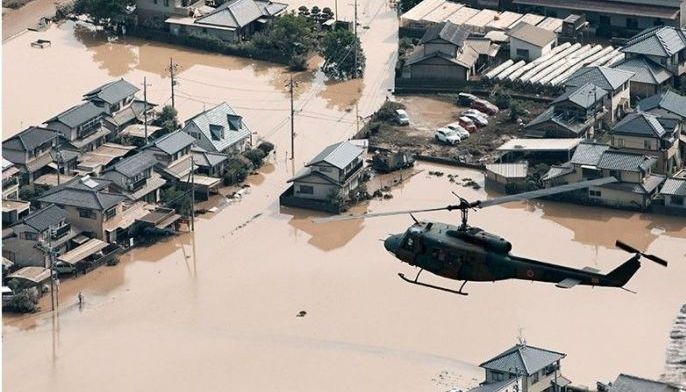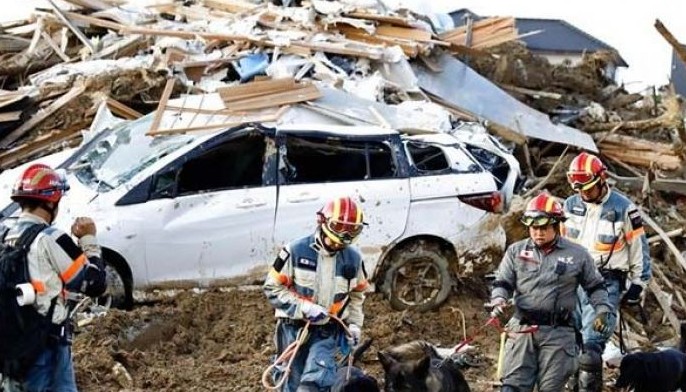Rescuers comb through mud for Japan flood victims; 134 dead

HIROSHIMA, Japan — Rescuers were combing through mud-covered hillsides and along riverbanks Tuesday searching for dozens of people missing after heavy rains unleashed flooding and mudslides in southwestern Japan, where the death toll has exceeded 130.
More than 50 people were unaccounted for as of Tuesday morning, many in the hardest-hit Hiroshima area.
Work under the scorching sun was hampered by mud and heat, and shipments of relief goods were delayed by damaged roads and transportation systems, especially in areas isolated by the disaster.
"No water, food, nothing gets here," Ichiro Tanabe, a 73-year-old Kure resident, told the Mainichi newspaper. "We are going to be all dried up if we continue to be isolated."
The landslides and flooding across much of western Japan have killed at least 134 people, Chief Cabinet Secretary Yoshihide Suga told a news conference. Another seven were presumed dead.
Some of the thousands of residents who had been evacuated, some rescued from their rooftops, began cleaning up after the rain stopped Monday.
Suga said the government set up a taskforce and was spending 2 billion yen ($18 million) to hasten deliveries of supplies and other support for evacuation centers and residents in the region.
Earlier Tuesday, the Self-Defense Force ferried seven oil trucks from Hiroshima to Kure, a major industrial city whose 226,000 residents were cut off from the rest of the prefecture due to the disaster.
Thousands of homes were still without clean water and electricity in Hiroshima and other hard-hit areas. Residents lined up for water under the scorching sun as temperatures rose to 35 Celsius (95 Fahrenheit), raising risks of heat stroke.
Residents sheltering at a local elementary school in Hiroshima's Yano district were provided with water, blankets and cellphone chargers. Some shared stories of narrow escapes.
Saburo Yokoyama, 82, said he was horrified when he saw floodwater flowing just outside his house. "It was scary, just scary. The front of our house became a river, and was making a huge noise," he said.
Ryutaro Hirakawa, 18, said he fled his house after smelling a strange odor coming from the ground, a sign of a landslide. "The smell of soil and grass was so strong when I opened the window," he said. "There were landslides."
Prime Minister Shinzo Abe canceled a planned July 11-18 trip to Europe and the Middle East to oversee the emergency response. The government mobilized 75,000 troops and emergency workers and nearly 80 helicopters for the search and rescue effort, Suga said.
Assessment of the casualties was slowed by the scale of the area affected. Officials in Ehime prefecture asked the government to review its weather warning system, noting that rain warnings were issued after damage and casualties already had occurred. The Japan Meteorological Agency said as much as 10 centimeters (3 inches) of rain per hour fell on large parts of southwestern Japan.
___
Yamaguchi reported from Tokyo.
___
Follow Haruka Nuga on Twitter at https://twitter.com/HarukaNuga
Her work can be found at https://www.apnews.com/search/haruka%20nuga
- Latest
- Trending
































